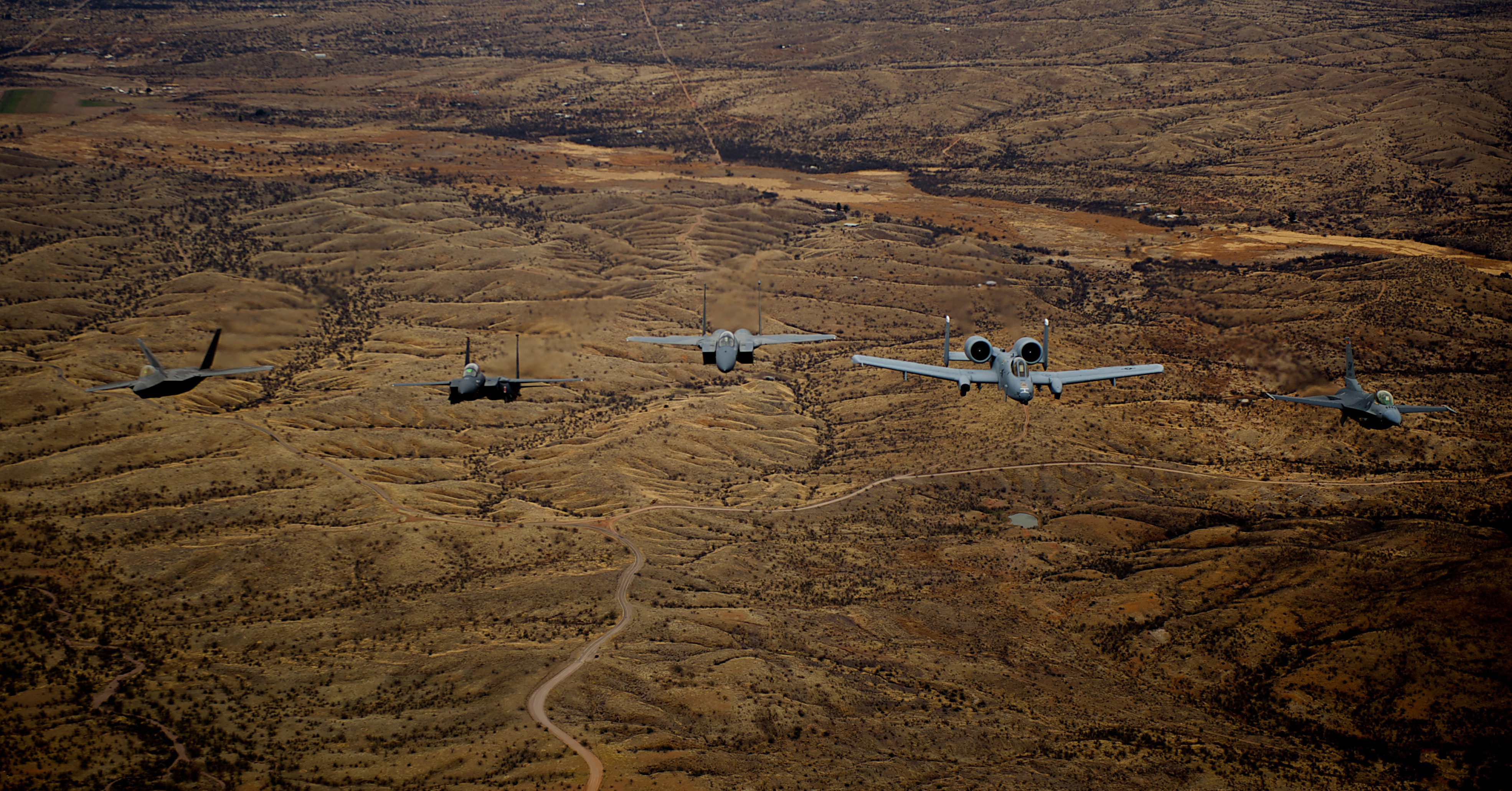The commander of Air Combat Command has said the service may have to retire a legacy fleet—likely the A-10, F-15C, or F-16 Block 30—in order to make room in the budget for newer, more capable aircraft to come online. Here, an F-22 Raptor (left), F-15 Strike Eagle (second from left), F-15C (center), A-10 Thunderbolt II (second from right), and F-16 Fighting Falcon fly in formation. Air Force photo by SSgt. Samuel Rogers.
Air Combat Command needs to grow, but can’t afford to, and so it will likely wind up cutting more legacy fleets, ACC chief Gen. Mike holmes said Tuesday at an AFA event on Capitol Hill.
Holmes said he has two “asks.” First is for “a predictable budget,” so the Air Force knows what it will have to spend “year after year after year.” Then, “whatever that is, I need the flexibility to right-size the Air Force. Right now we’re too big for the budget we have. The consequences are that I have squadrons that are not ready, and I have acquisition programs that, instead of being executed in two or three years, are being spread out over 10 years. It drives up cost, it means they arrive late.”
This, Holmes said, is “not the optimum way to approach this.”
ACC’s 55 squadrons—only 32 of which are Active Duty and the rest reserve component—are “not enough to meet the demand that combatant commanders ask for,” said Holmes, hence the “too small” situation. Yet, because the Air Force is too big to live within its means, he added, legacy fleets are being looked at to see which ones will have to go, and when.
“We’ll work through the options of what comes out next,” Holmes said, specifying the A-10, the F-16 Block 30, and the F-15C as three candidates for near-term retirement. “I have my view” on which it should be, Holmes said, and the audience seemed well aware of which one that is: Holmes has asserted he thinks the F-15 might be the right one because of its age, operating expense, and the fact that it can only capably serve about 10 more years without a large investment in new? capabilities.
Holmes said that while the average age of the overall Air Force fleet is 27 years, it’s 29 years in ACC, and he needs to buy that down with infusions of new airplanes. In 1991, he noted, the Air Force was buying 500 aircraft a year, but since then, it has declined to just 100. ACC’s share of those purchases was about 200 aircraft per year in 1991, but since then it has averaged 20.
Holmes also pitched for buying a light attack airplane fleet filled out with “24 PAA [Primary Aircraft Available] squadrons, the way God intended,” if experiments with such aircraft this summer prove successful. If the Air Force is only “halfway through” a generational war against terrorism, such aircraft would be a useful way to build the pilot cadre, which Holmes also noted is in a deep deficit, and perform close support and counterinsurgency missions at a far lower cost than with, say, F-35s or F-16s.
